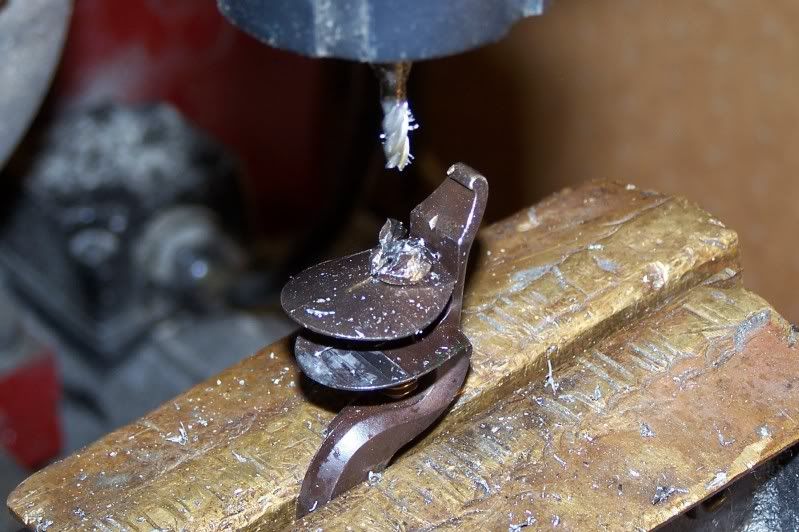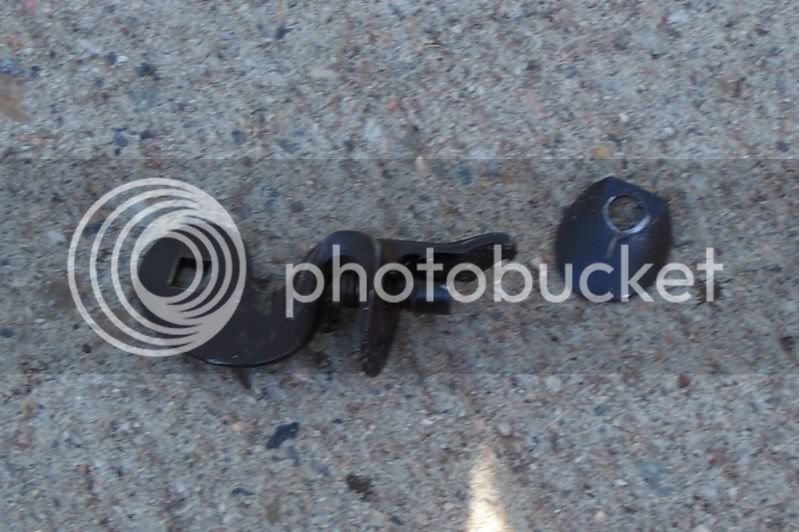the following is a message i wrote to Paul some time ago. sorry if it's a tad longwinded.
the readers' digest version:
(a) lead wraps don't add all that much to the cock/flint weight, so i don't see what all the fuss is about. and
(b) it works for me, so i'll use it, but that doesn't necessarily mean you have to do it that way.
Paul-
Thanks for getting back to me so soon. My computer, my work schedule, and the goings- on at our farm haven't exactly been in the same good place, so please forgive my tardy response.
I took a .36 Hornady (i.e. pure lead, or a reasonably pure lead) roundball and mashed it as flat as it would go in my vice, then a whacked it a few times with a finish hammer to get it flatter and smooth out the wierd looking grooves the vice face put in the ball. It measured about 1/32 to 3/64 of an inch thick. Then i put it around the flint in my T/C Renegade, tightened down the screw and fired the lock three times with nothing in the pan. This lock has a hole through the cockscrew, so you can put a pin or allen wrench through it and get better leverage than you can with a screwdriver, and i put my cocktightening tool (a bit of coathanger wire) through the hole and 'reefed it down.' Got another three quarters of a turn, and, unlike setting a flint in leather, the flint didn't move (always a pain in the neck before i tried your suggestion).
The spark, which was initially getting a bit anemic, perked right up: a nice shower of sparks, right into the pan, with an old and beat up flint which i neglected to knap, and an even older and more beat up frizzen (actually, it's a twenty year old Lyman... they're cheaper than T/C and they do interchange ... frugal is good).
way cool!
the leather weighed about fourteen or fifteen grains, and the lead ball weighs about (if i remember right) about 65
grains ... oh, darn, now i'm curious... got my scale out...
lead ball mashed, 66.2 gr
" " not mashed 66.7 gr
leather 13.2 gr.
now i trimmed away about a third of the lead from the jaws of the cock, so i would estimate that i've got about forty four or so grains of wrap on the flint
then, just 'cause i have them handy, i got my bag of 3/4 inch French Amber flints, and i found:
flint #1 52.8
flint #2 46.5
flint #3 61.8
flint #4 49.2
flint #5 67.2
flint #6 41.3
flint #7 62.2
flint #8 41.2
flint #9 48.0
flint #10 59.9
flint #11 49.8
so, from a high of 67.2 grains to a low of 41.2 grains, i might get a gain in weight of as much as 26 grains going from one flint to the next, and the change might be even more dramatic considering that i'm a congenital cheapskate, and i've beaten on the flint pretty good and knapped it a few times before i grudgingly set a new one in the cock.
so, leather (13.2 grains) and flint (heavy) at 67.2 grains gets me 80.4 total weight in the cock. or lead wrap at about 44 grains and light flint at 41.2 grains gets me 85.1 grains hitting the frizzen: a difference of 4.7 grains.
you could make at least a colorable arguement that the weight difference of the flints runs pretty close to the weight difference in going from leather to lead. additionally, the proportion of the mass of the lead/flint combination to that of the cock, jaw and screw compared to the proportional mass of the leather/flint combination to that of the cock, jaw and screw is, i think, so close as to be de minimus. (i've been up all night at the paper mill where i work, so i'm not up for taking the lock apart and weighing these pieces, but i'd be willing to be that thye run pretty close to the capacity of my little 500 grain scale).
so, thanks for the words of encouragement, and (having been duly encouraged) i tried your method and it works better than what i was doing before, and i agree that there doesn't seem any logical reason to worry about the strength of the cock not being up to the job .
Thanks again!
Matt Williams








